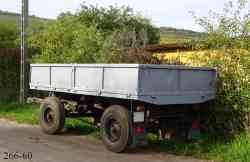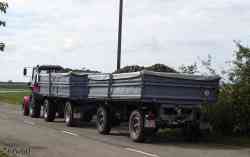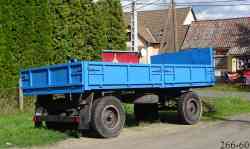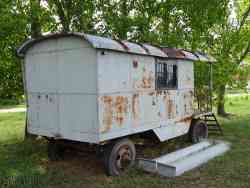Венгрия
Magyarország
Редактор: 266-60.
Комментарии к фотографиям из региона
|
Предприятия
Статьи и фотогалереи
Общие фотогалереи
Разные фотографии
Музеи, памятники
Мероприятия, парады
Новые фотографии
По региону ТС / По региону фото Информация
"Four letter - three digit" system of number plates in Hungary The new system is introduced in 2022, since the previous one is near its end. The new format contains 2 x 2 letters and three digits. The new system works like a serial number, combinations are issued one after another. There are no differences like in the previous system, only taxis (yellow background and beginning with TX) and environmentally friendly cars (green background) are separated from the others. "Three letter - three digit" system of number plates in Hungary The system was introduced in 1990, when the vehicle register was moved to the local governments from the police, and a lot of corrections needed to be done. Accordingly, the number plates of all of the vehicles in circulation needed to be changed to a new one. With a few exceptions, all two-letter-four-digit plates were replaced. However, the combination has originally no connection with geographic location, several letter combinations have their original city, and several combinations were introduced in more cities depending on their sequence number. Issuing new plates and changing the old ones was carried out in parallel. Types of Hungarian number plates, which are important in connection with freight transport:
More info on Wikipedia Freight transport in Hungary Before 1990, there were only state enterprises for freight transport. The largest companies were the AKÖV-Volán companies, the Volán TEFU (1948-2004) and Hungarocamion (1966-2006). In 1991-1992, the Volán companies had to get out of the freight profile, these parts were reorganized to separate firms and later they were sold. After 1990, many new private firms were also established. In 1994, Volán TEFU was privatised, in 2002 it bought the Hungarocamion (but its name remained yet), then in 2004 the group took up the name Waberers Holding Logisztikai Rt., in 2006 the name Hungarocamion was changed to Waberers International Rt. Truck fleet in Hungary In the years of socialism and the 90s, Hungary was a unique place, because almost all of the socialist truck manufacturers were represented by their products in comparable quantitites. For example, in 1992, 5940 Kamaz and 4153 Tatra trucks were in operation, their ratio is only 1.43. In the other countries, either Kamaz trucks or Tatra trucks dominated. In the category of 3-ton trucks, in 1992, 6223 Avia and 8700 Robur trucks were in operation. Their also had a similar ratio. Besides these, the IFA was the most represented make, over 64 000 of them worked in 1992. During the late 90s, and in the first decades of the new millenium, inflowing of models from West Europe increased, both used and new vehicles. Somewhen in the 00s, the fleet turned: more trucks from West Europe operated than the old makes of the East Block. Some makes became extinct or extremely rare, such as Jelcz, Star, MAZ, Robur or Roman Diesel. The national trucks, such as Csepel and Rába came to also this fate. In 2009, the number of operating IFA trucks also fell under 10 000. In 2017, only circa 7000 of the old East-European trucks were in operation, when alltogether 481 000 trucks worked in Hungary. The most common medium and heavy trucks are now Iveco, MAN, Mercedes, Mitsubishi and Renault. Активные фотографы региона
/
|
|
Случайное фото
|











